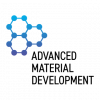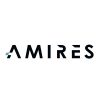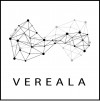March 12 2019
Nano in Test Guidelines (TG)
NIA attended the recent OECD Working Party of Manufactured Nanomaterials (WPMN) Meeting in Paris. The OECD Test Guidelines underpin chemical test methods globally and in Europe, including REACH regulation. At the OECD WPMN, work between Members to develop and revise several OECD Test Guidelines (TG) was agreed and is now underway within the OECD WPMN work programme. NIA and several of its Members are active in supporting the TG development to ensure the industries views are being considered.
NIA is also part of the ‘Malta Project’ within the H2020-funded Gov4Nano project which came to life in 2019 and which is addressing 7 OECD TGs for modification to reflect nanomaterials testing. These include dissolution, surface chemistry and coatings, harmonised TG for (V)SSA, in vitro skin sensitisation, dustiness, abiotic transformations in aquatic media and bioaccumulation in fish.
The Malta project has enabled a boost for ‘nano-enabling’ Test Guidelines – not only through the financing and framework from the European Commission project, but also the added visibility that such a platform gives TG modification at national level. NIA will bring expert input to the work from Members, reflecting industry priorities and ensuring a strong standards framework for confidence in nanomaterial development.
Nano in regulations
Following the December publication of the revised REACH regulation, ECHA started its Partner Expert Group (PEG) process to provide Guidance on the term nanoform and sets of similar nanoforms. NIA is one of the nominated expert stakeholders to this exercise and provided detailed comments on a first preliminary draft, after consultation with Members.
Over 70 NIA comments were submitted to ECHA and reflected industrial concerns including implementation of the nanoforms definition and how to apply, justify and use sets of similar nanoforms. In addition, concerns have been raised on the proportionality of the requirements with regard to tonnage and practicality of some of the methods suggested.
ECHA will now kick start meetings in the next months via teleconferences and a meeting in Helsinki. NIA is engaging with several other industries and industry associations to provide relevant input to these discussions. Work responding to nanoforms in REACH has been ongoing in NIA’s Global Regulatory Working Group for almost 18 months, with valuable Member input to define how nanoform sets might be structured and a collaborative workshop with ECHA in 2018.



















